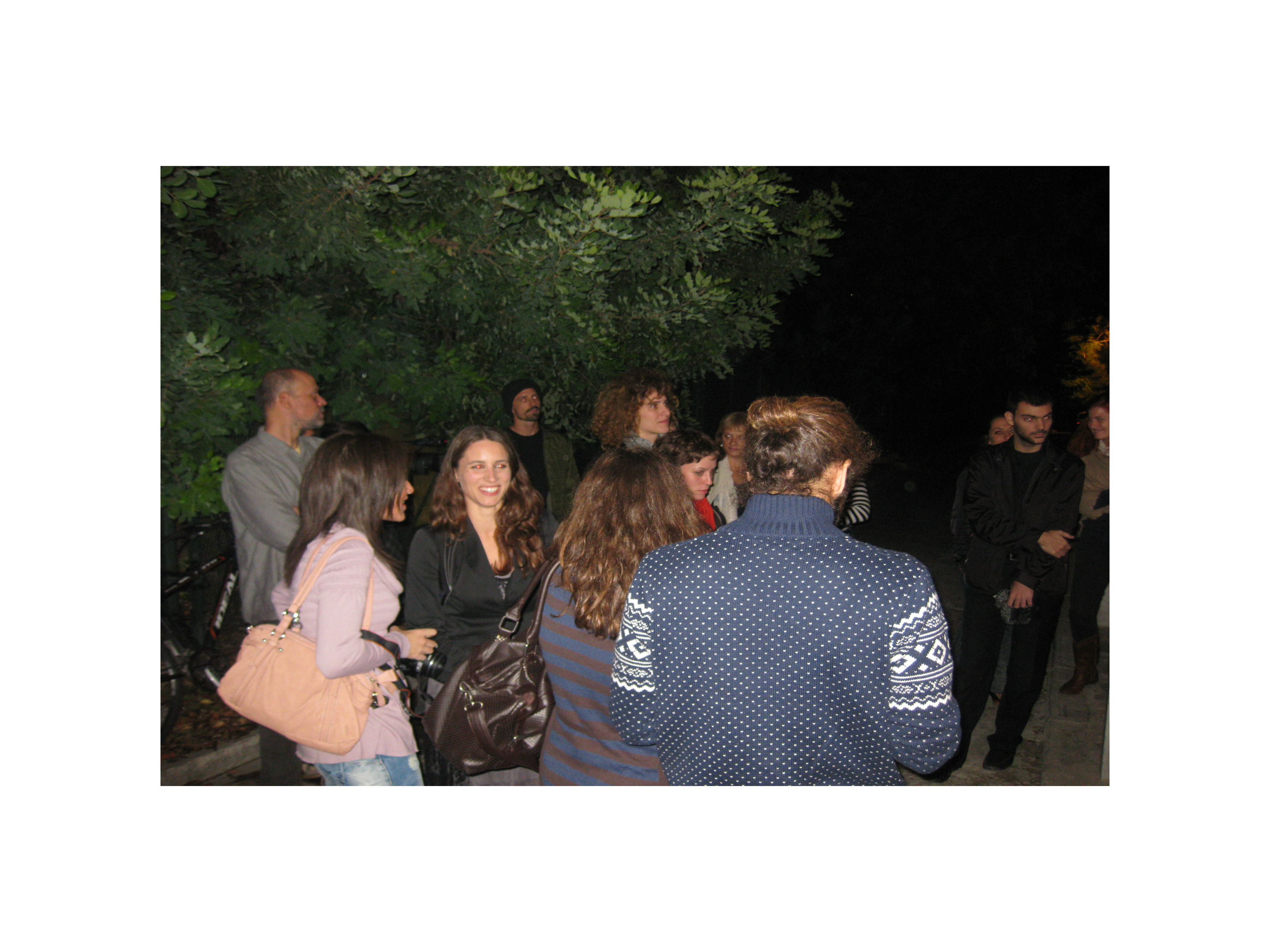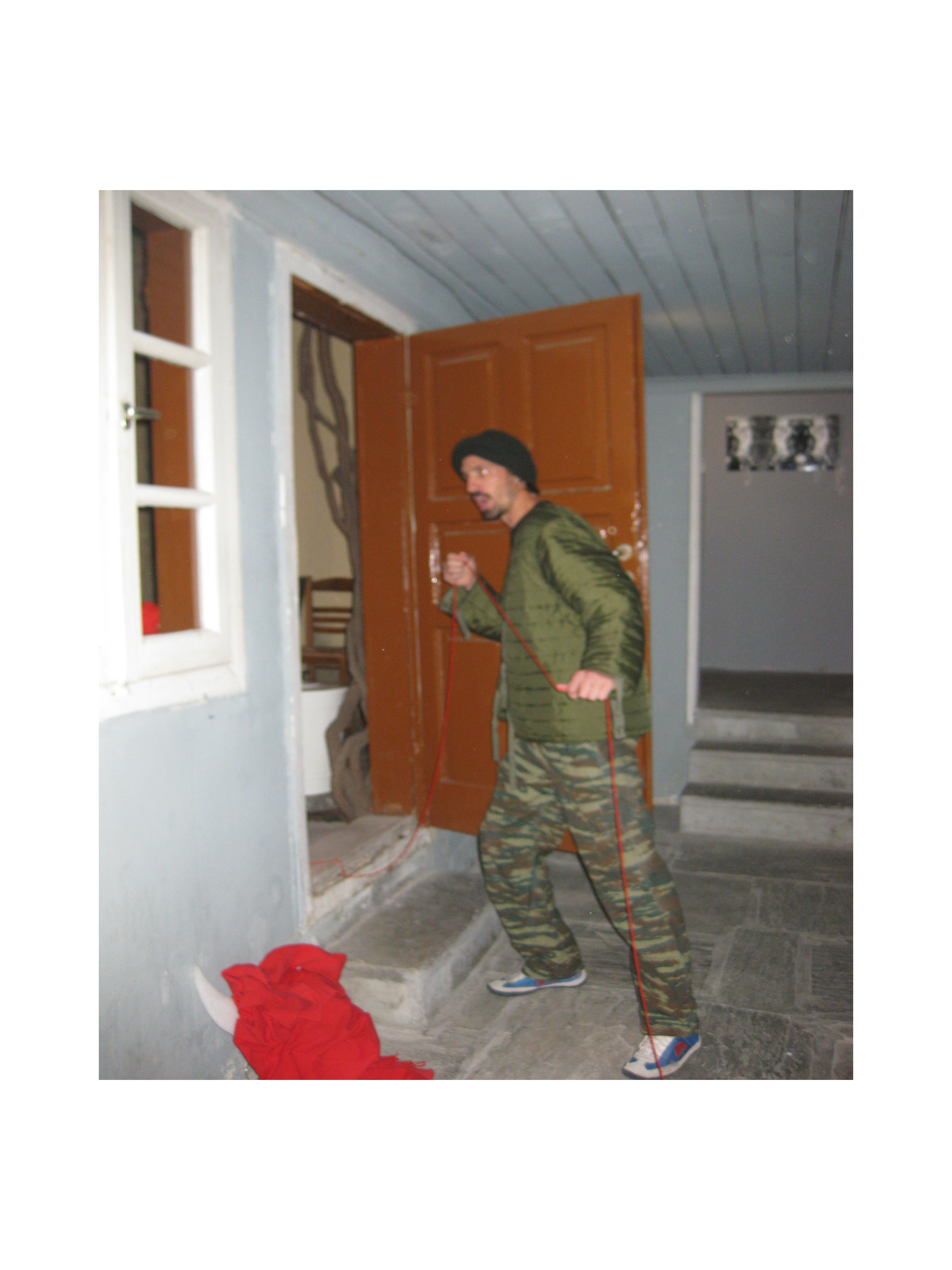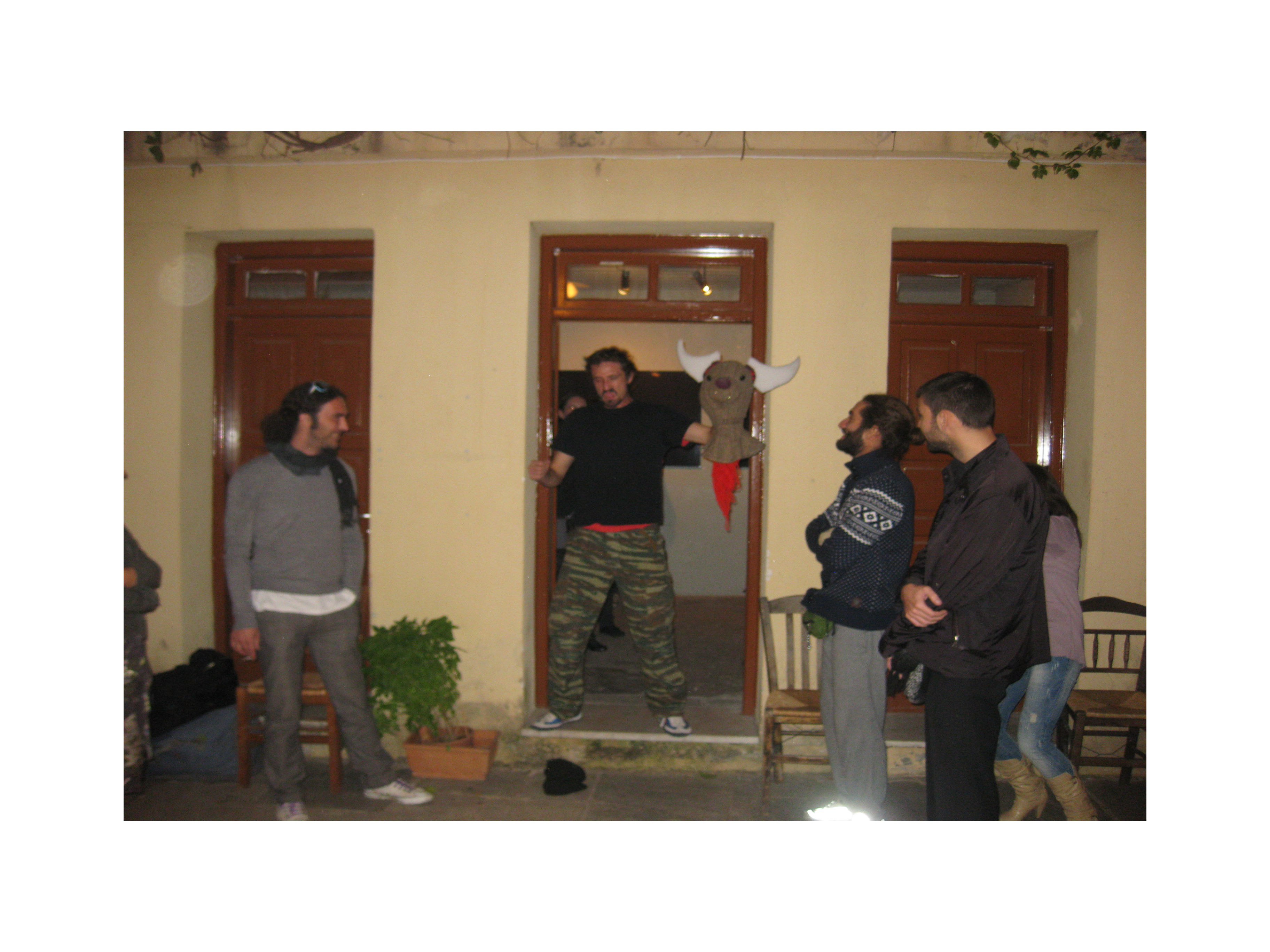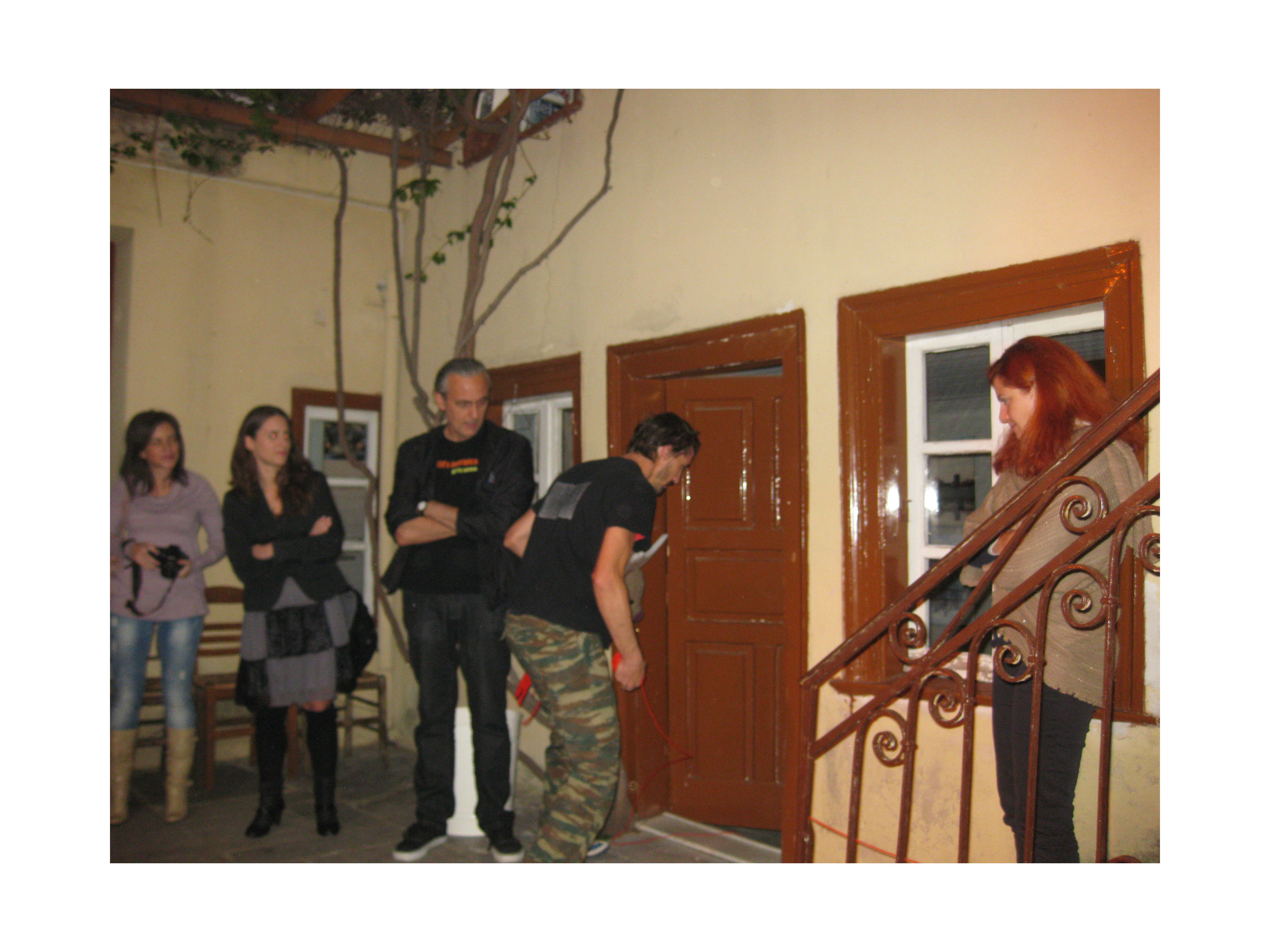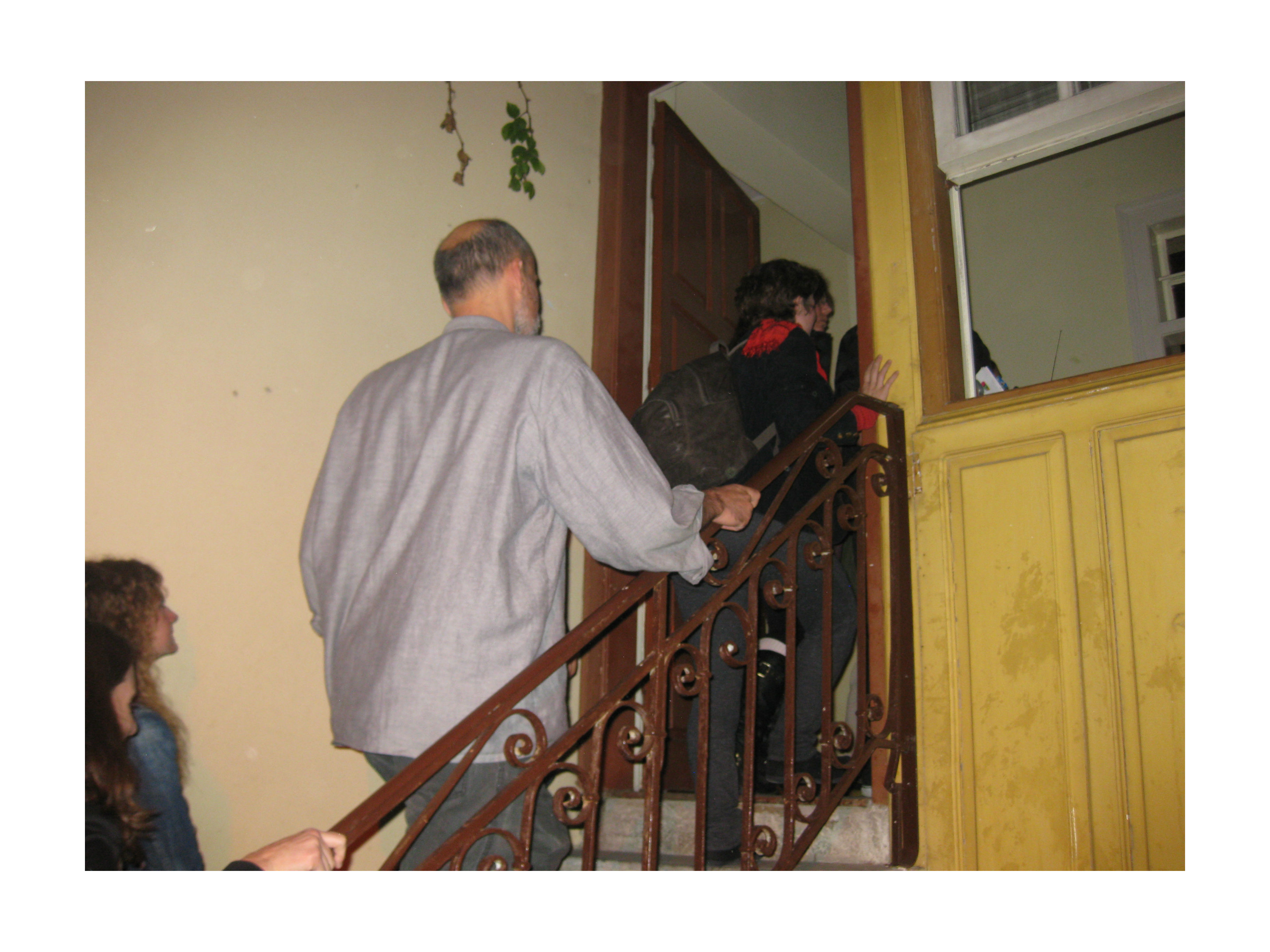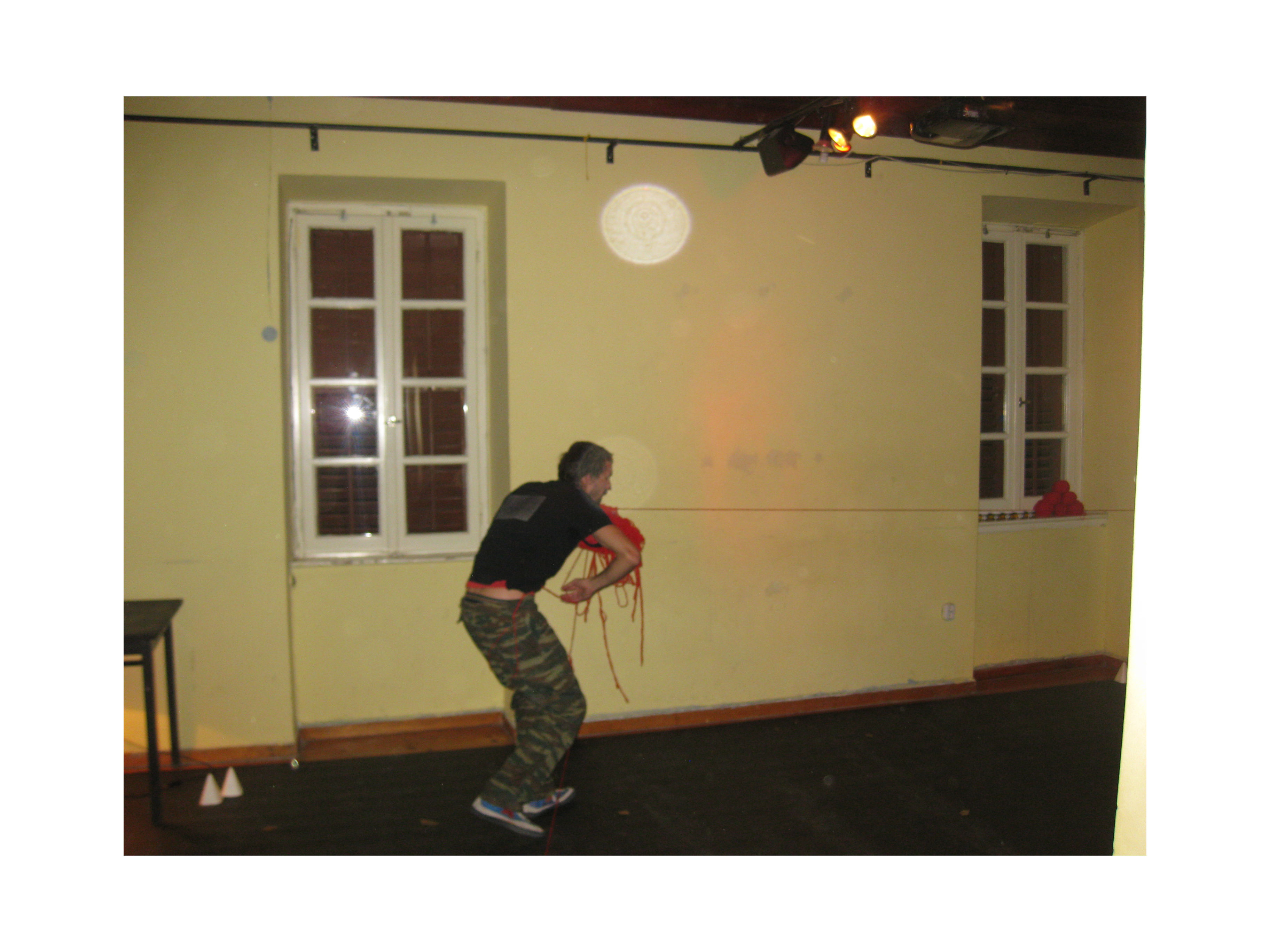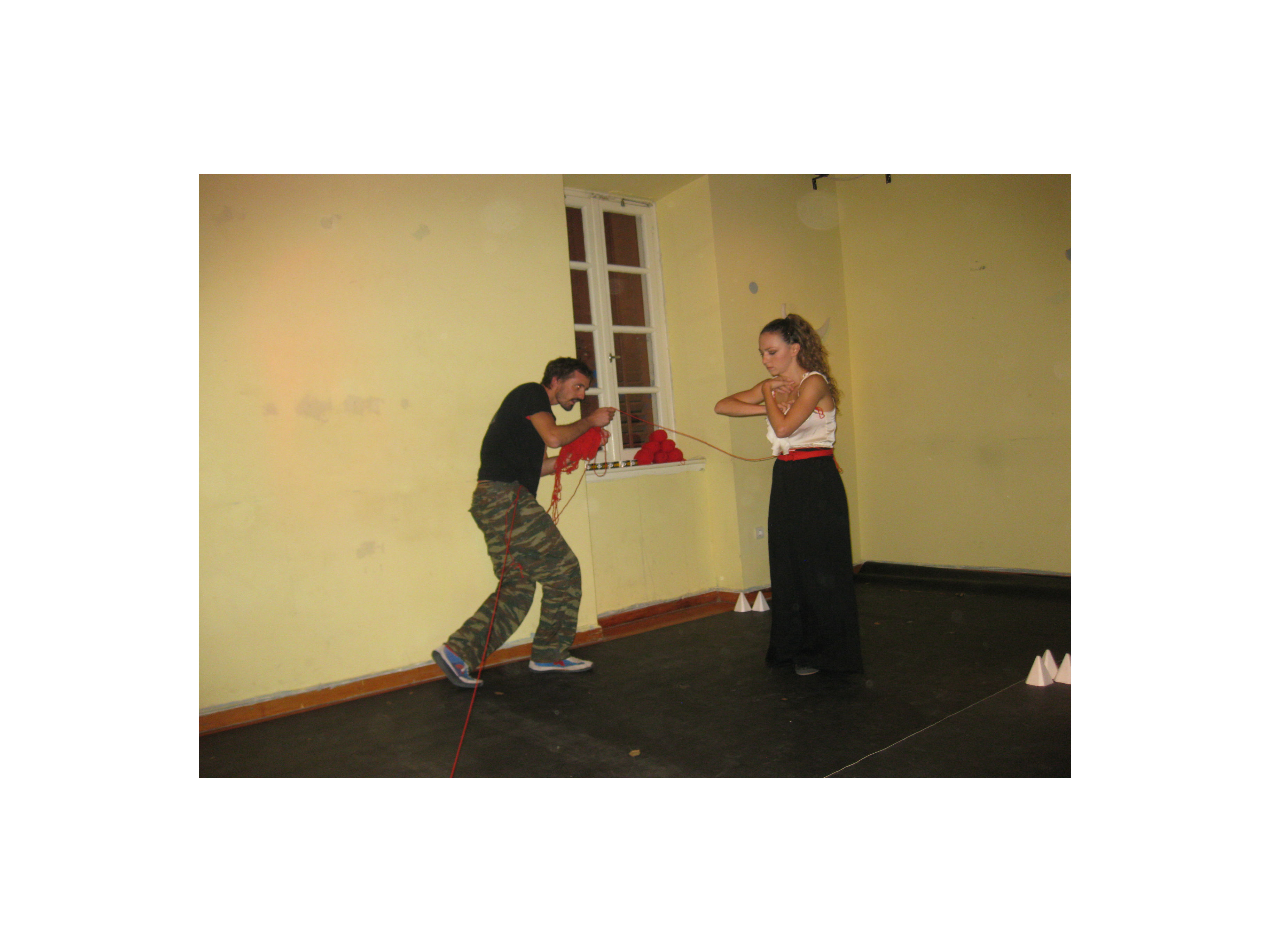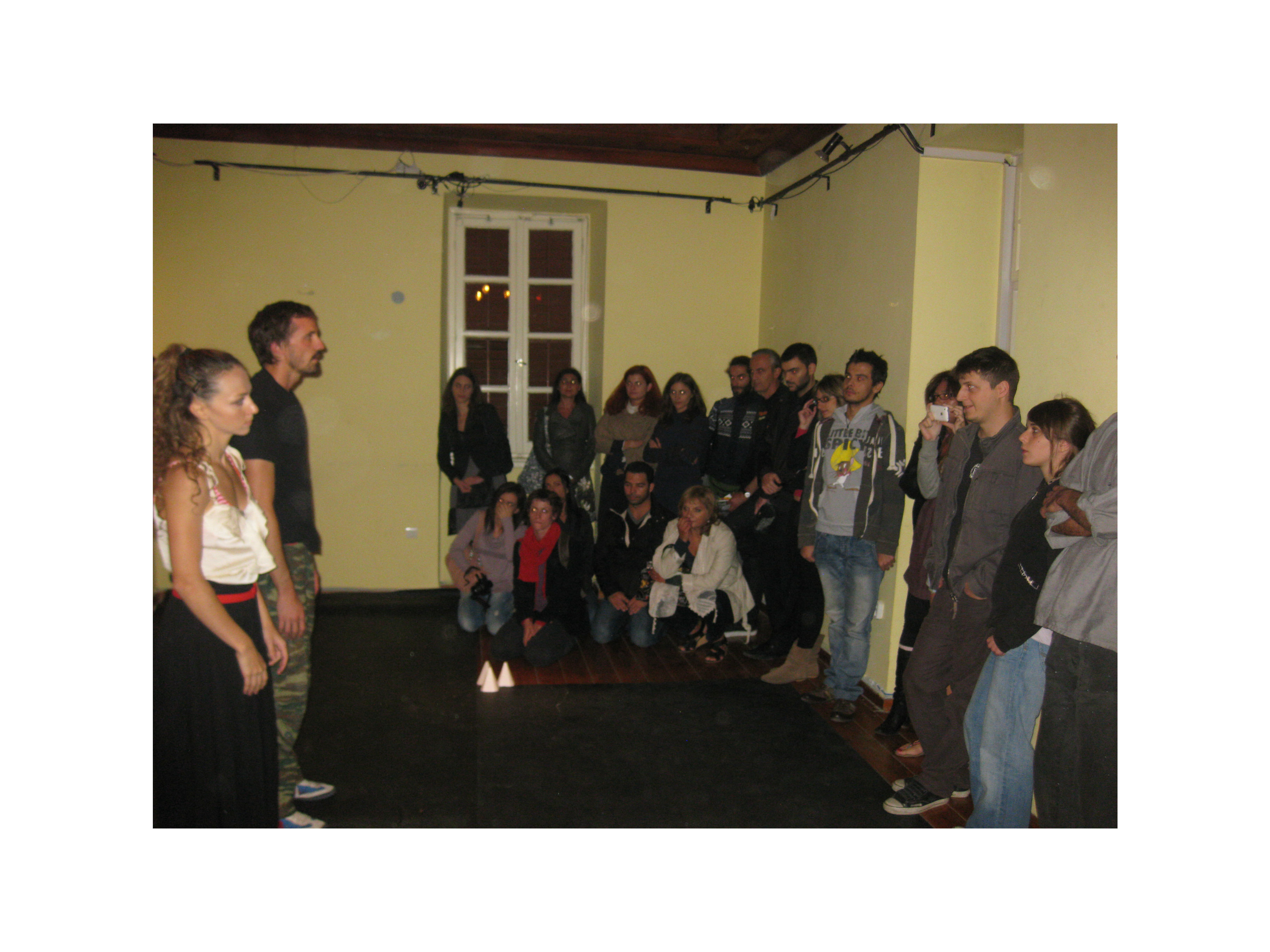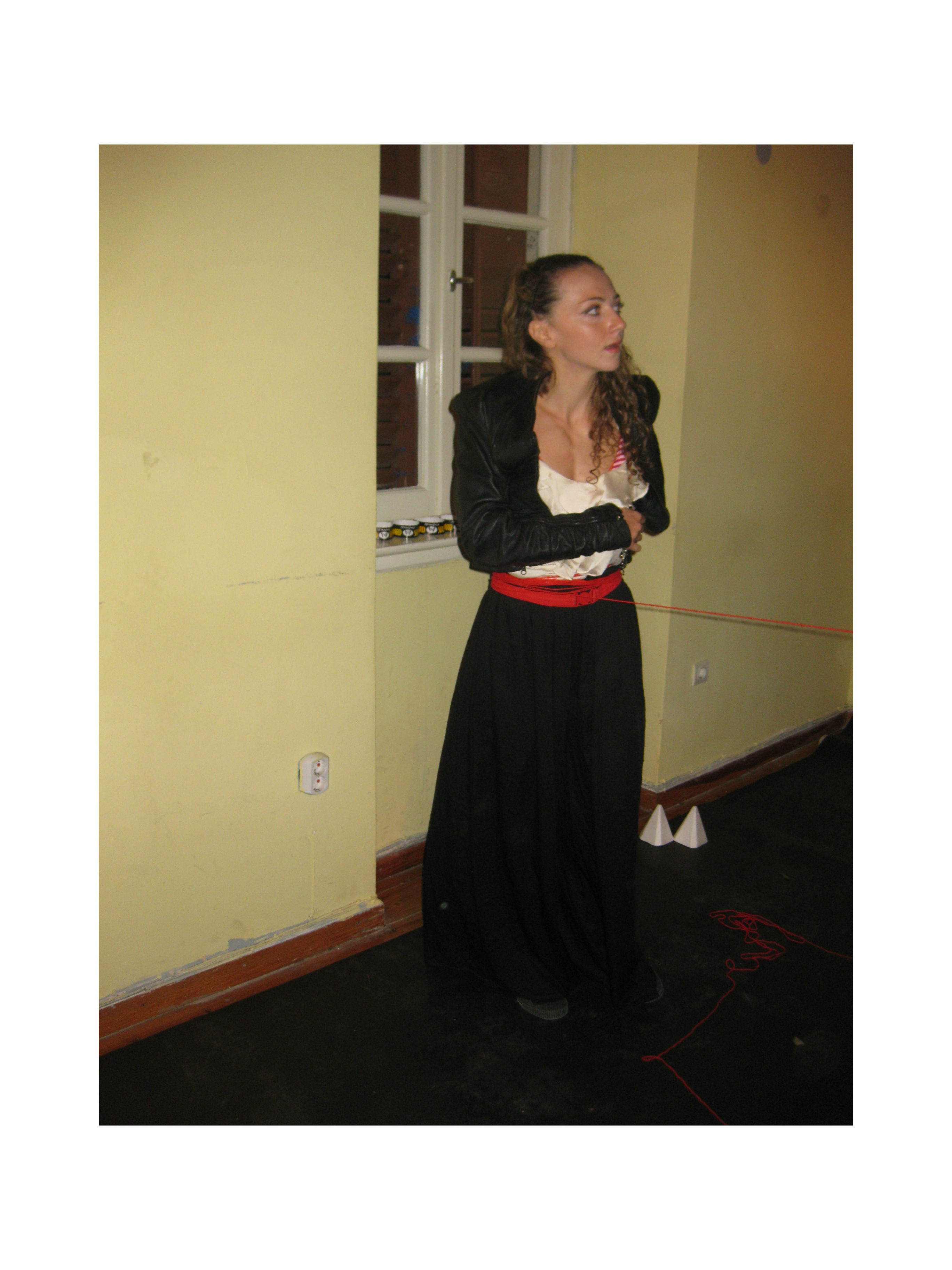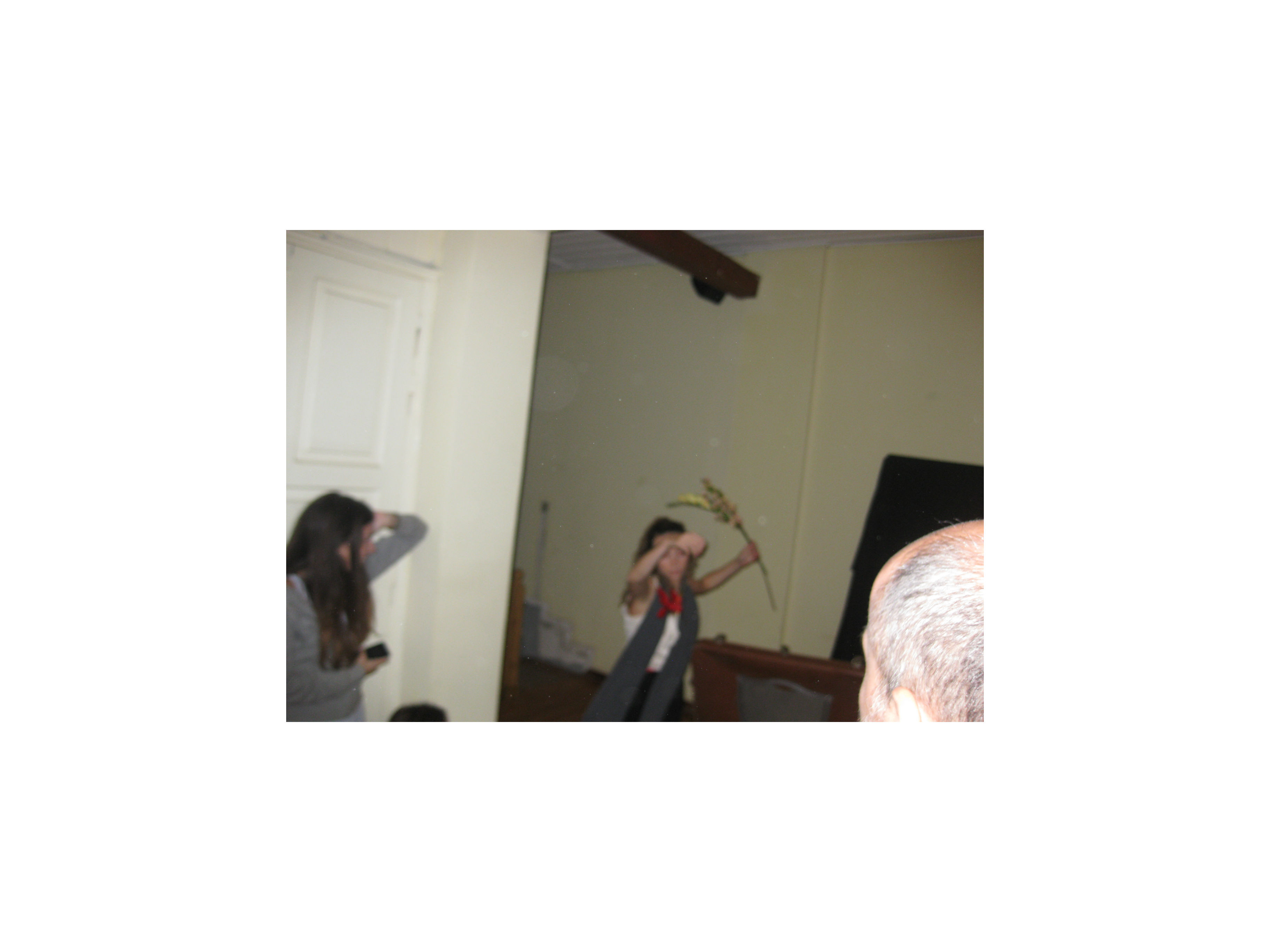Together + her - Paul and Christine
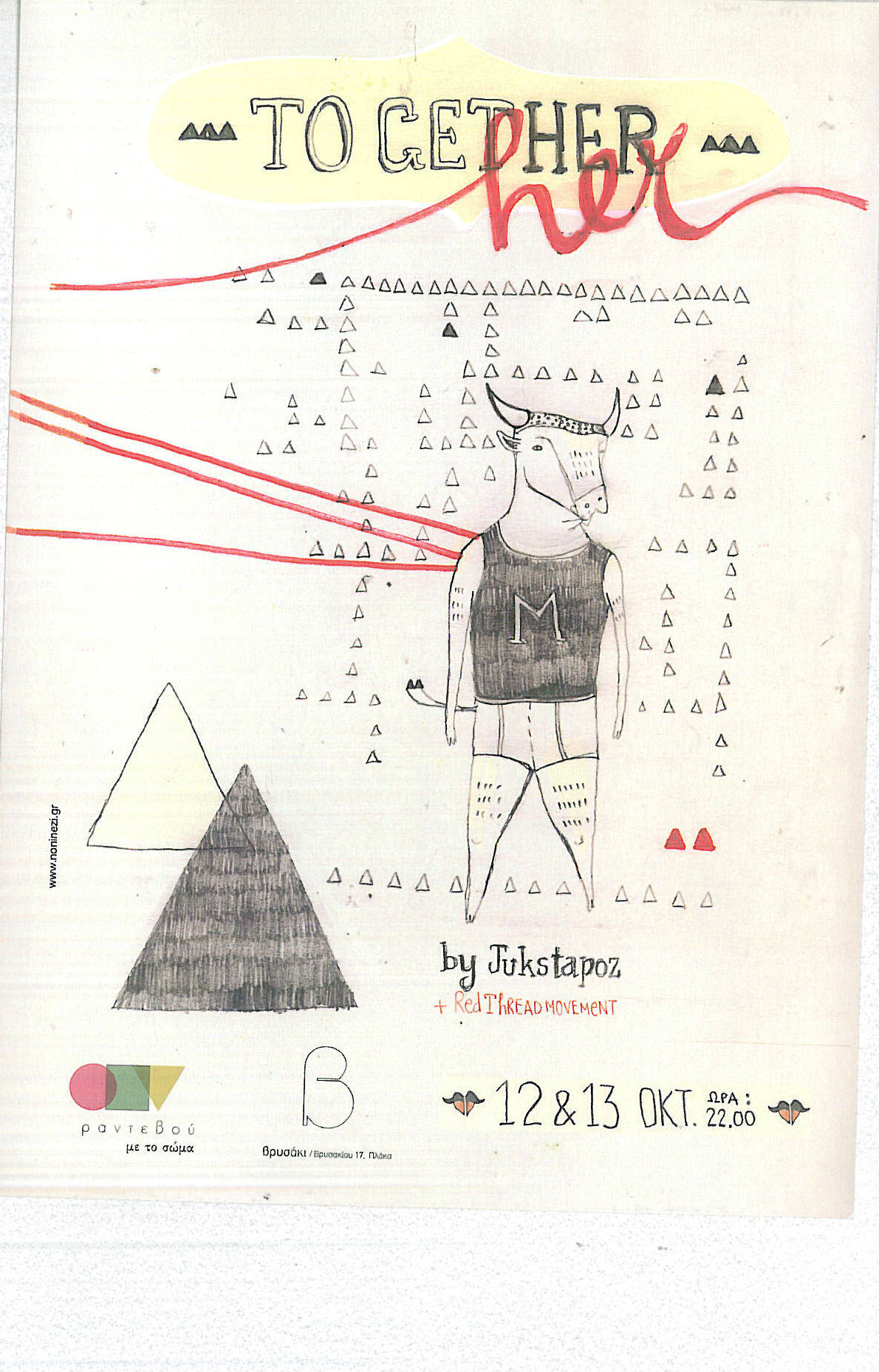
This piece 'Together + her' is connected
by a red thread
and reminds of Minotauros
It is a part of Greek mythology and linked to Crete. MINOTAUROS (or Minotaur) was half bull, half man and conceived by Queen Pasiphae of Crete after she had made love with a bull. The bull was discovered according to Ernst Schnabbel by King Minos on a ship in the harbor after the king had tried in vain to get a hold of a nymph. The latter eluded him always until he thought to have her finally cornered high up on a cliff, but she jumped. Mythology has it that is how the parachute was invented since when she jumped, her wide skirt opened and instead of being crushed upon impact below she floated down gracefully. She made off with one of the sailurs to the anguish of King Minos. Naturally it is always interesting how writers seize upon a falsh of inspiration to retell this myth. Ernst Schnabel does so in his book 'I and the Kings' which is about Daedalus, the engineer whom King Minos had hired to build the labyrinth and who observed what was going on at the court of King Minos.
The entire story is linked as well to the dominance of King Minos at that time over Athens. The latter Polis had to sent every seven years a ship with young girls as tribute to Crete. On one of these trips the brother of one of the girls refused to accept this sacrifice by giving seven girls to the king on Crete. He went along with the ship bringing the girls to him.
Once there he challenged everyone, including the bull in the arena and instead of fighting merely the bull, he do so as well Minotauros. This is how the bull fight came about but in Crete it meant more jumping over the bull by using the horns to vault.
Ariadne comes into the picture insofar as the mythology is concerned. She fell in love with this man from Athens called Theseus. To help him find his way out of the labyrinth, she had used a red thread to show him the way.
Ever since the 'red thread' has become a metaphor for many things, including the memory track by Sigmund Freud, but that is another story.
One more thing: Ariadne elopes with Theseus after he has defeated the bull, but their relationship does not work out according to Greek mythology. This is why the piece ends with her stomping around a suitcase out of which she unpacks the appropriate clothing for the season.
DANCE: together + her
The performance took place in the Plaka, Oct. 12 and 13, 2011
It starts with people gathering outside, in front of that beautiful house with many rooms, an inner court yard and a roof top veranda - one of the many beauties in the Plaka, directly underneath the Acropolis.
Amongst the audience waiting outside, there can be spotted the performer Paul (in the background with black hat). Once the performance begins, he goes up to the door and bents his body back to ask for it to open.
Following the red thread
Paul started by standing with the audience outside the house and like Theseus he used a strong body language to get the door to be opened. Once inside he intertwined his performance with seeking and finding the red thread which took him through the various rooms downstairs of that beautiful building in the Plaka. He used a broom stick and the cover of a rubbish can to imitate the Greek warrior. He was fierce. Ready to attack.
But he was also led astray by the labyrinth. According to mythology Thesseus finds his way out of the labyrinth thanks to the red thread that Ariadne had laid out. Consequently he disappears into the rooms down stairs, if only to reappear in another door way. This time he carries with him a bulls head to signify Minotauros.
Dance becomes in such a setting a symbolic interplay with Greek mythology. It was performed in the Plaka below the Acropolis and revealed the hidden dimensions of artistic visions despite the prevailing crisis.
Appears Minotaurus
Making his way downstairs, the audience looking on and later following him along the path the red thread takes him.
Back to where he came from or how to find the way, if there is no red thread?
The audience follows him upstairs; the red thread leads him into a special room. There awaits him Ariadne.
Christine with red thread - as if life hangs on a thread
In the upper room waited Christine as 'Ariadne', the red thread wound around her delicate waist. Once Paul as 'Theseus' had unwound her, they started to dance together - like in their storage piece to a blend of American music and songs, including the one which has the refrain 'tall and enchanted, she looks not at me but straight ahead and does not see me'. Christine as dancer of the Athenian School but also for some time with Jasmine in her London group, startles one in how she can imitate the sexy woman or the shy one. Her movements are always filled with grace.
Together the couple dance and move through the room, and in so doing, they transform the abstract space into a concrete platform. This is needed to tell how she finally no longer walks past him, but begins to see him. And she sees in front of her that future life together.
But once the two had completed that vow to be together, it does not turn out that way. After the break-up of their marriage, she is on her own.
'Her' is a piece linked to the four seasons.
She stomps and stomps around a suitcase out of which she fetches the clothes while stomping - first spring, then summer and out come the sunglasses and the bathing suit while when it goes into autumn she sprinkles autumn leaves upon her head and in the winter snow. Her lonely piece represents a follow up to the break up of the marriage as told by Greek mythology. It did not work out. Why, no one really knows. The circling around, the stomping takes on the language of a powerful metaphor. For how will life end when a woman remains single and grows old while the seasons just slip by, year after year?
« "Self-Storage" A production by Christine Gouzelis and Paul Blackman | "Vicious Cycle" - dance performance »

